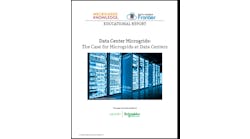Data Center Site Selection Key to Business Continuity & Disaster Recovery
Amidst the COVID-19 crisis of 2020, the topic of disaster recovery (DR), and its big brother, business continuity (BC) is one of the most misunderstood in the world of business — and also one of the most important. A new report from Prime Data Centers explores those misunderstandings, and highlights how to better protect your data — one of the most valuable assets any company today owns — in today’s climate. How? According to the report, “site selection” is key for your data business continuity strategy.
Get the full report.
Today, data can make a company, but data loss can break one — just as easily.
But according to the report, the “challenge” with disaster recovery is that is often means different things to different people.
“Interdependencies between disparate data sources and the applications using that data must be identified and documented prior to any “real work” beginning,” Prime Data Centers points out.
The report begins by offering a “common dictionary” of business continuity terms. Those described in detail include:
- Business Continuance (BC)
- Disaster Recovery (DR)
- Recovery Point Objective (RPO)
- Recovery Time Objective (RTO)
- Source
- Target
- Active/Active
- Mirror
The report also explores a list of criteria compiled by Prime Data Centers the data center development partner the company suggests adding to your decision process, and assigning a weight based upon your company’s RPO and RTO tolerances.
These include:
- Natural and humans-made disaster
- Utilities, electricity and cooling
- Distance from source
- Transportation and urban infrastructure
The criteria in the table, further outlined in the Prime Data Center report, can be a good start toward empirically proving your target site is ideal to protect the business.
RPO and RTO are impacted by distance due to latency, the safety score is impacted by distance + target weather/ seismic profile, RTO is impacted by distance + transport, etc. — Prime Data Centers
Ultimately, even though there may be 10 to 100s of legacy applications to consider, all of which may have different capabilities and challenges, all business continuity elements are “intertwined,” says the report.
Although the decision ultimately of where to house your data is an example of a multi-criteria decision process, Prime Data Centers contends that the first step is to understand that data center site selection and location will impact all the other criteria related to business continuity, and it may take expert resources and executive sponsorship to execute.
Get the full report, “Site Selection is the Foundation for your Business Continuity Strategy,” courtesy of Prime Data Centers, which explores the basic concepts and definitions of disaster recovery and business continuity.





